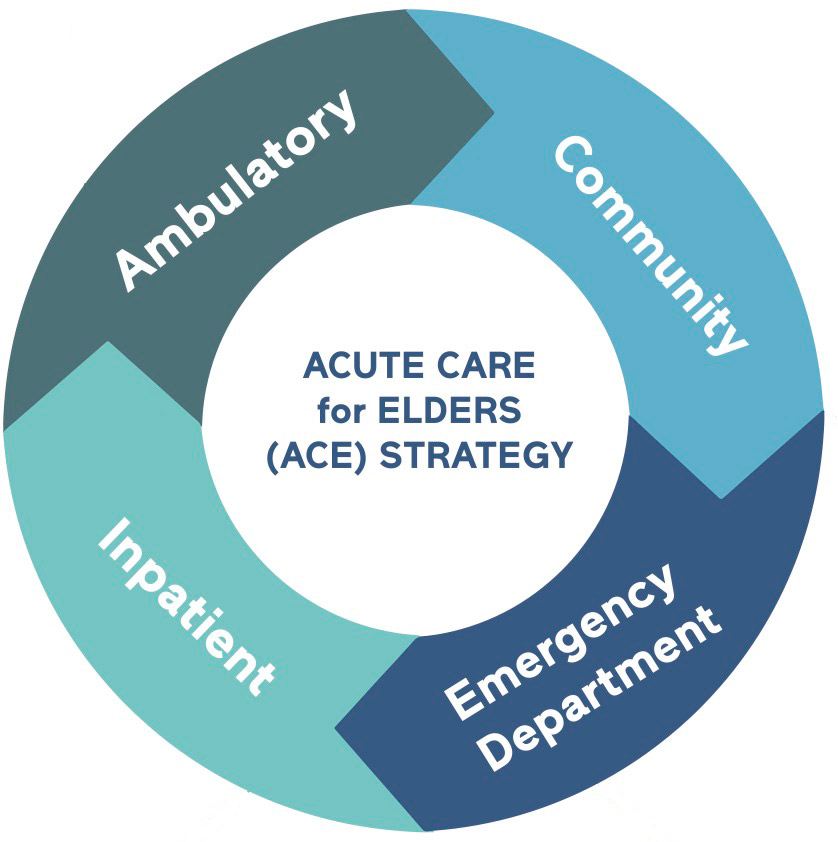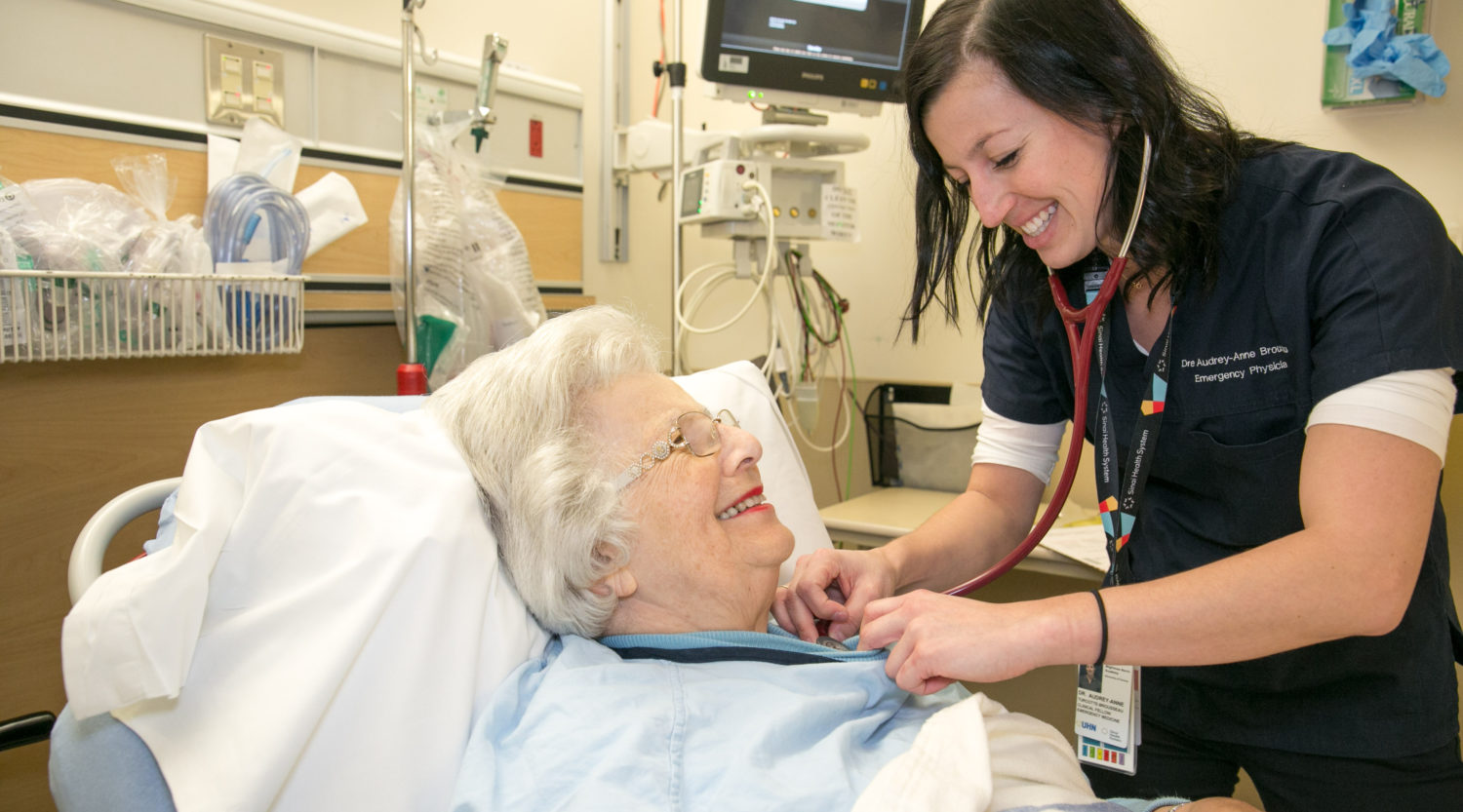To better address unmet needs of older adults in the ED, Mount Sinai Hospital embraced the idea of establishing its first Geriatric Emergency Management (GEM) Nurse role almost a decade ago. While at that time, there were only a handful of EDs in Ontario employing a GEM Nurse, today, there are 103 GEM Nurses in 56 EDs across Ontario.
What are GEM Nurses? GEM Nurses are ED-based specialist nurses with advanced training in geriatrics who are better able to assess and manage the complex care needs of older adults who come into the ED during a crisis. Having well-trained dedicated specialists in the care of older adults integrated within EDs can offer beneficial support to older patients, their families and the ED professionals looking after them.
With their enhanced knowledge of available resources, GEM Nurses have been found to be particularly effective at helping to reduce unnecessary hospitalizations and create more durable transitions for their patients by linking them with a variety of primary, home and community care supports and outpatient specialist geriatric services. For those patients who require an inpatient stay, GEM Nurses further facilitate their care by initiating appropriate care plans as soon as possible and ensuring that inpatient geriatrics consultation services follow up on identified issues in the ED.

ED Models
- ISAR Screening
- Geriatric Emergency Management (GEM) Nurses
- Geri-EM.com Staff Training Program
To ensure our GEM Nurses were spending time with the older patients most in need of their expertise, they spearheaded the implementation of the Identification of Seniors at Risk (ISAR) tool in our ED. By training all of our frontline nurses to ask six simple questions, all of our ED Nurses can now quickly recognize whether an older patient is at risk of functional decline, returning to the ED or institutionalization. This simple screening process has now empowered all of our frontline staff to immediately start adapting care protocols to prevent functional decline and delirium in our older patients, while connecting those at greatest risk with additional support from our GEM Nurses and others to ensure the best possible outcomes.
In 2015, Sinai Health System’s two lead GEM Nurses, Nana Asomaning and Matt Royal, saw a total of 1,024 patients. Patients seen by them indeed were found to be more complex and much more likely to arrive by an ambulance. However, with their support, the patients seen by our Nana and Matt were less likely to be admitted to hospital. Indeed, the majority of those who see our GEM Nurses end up returning home, connected with the appropriate supports they will need upon discharge.
In addition to the exceptional work that our GEM Nurses do to support older patients in the ED, Mount Sinai clinicians have further developed a training tool to support ALL of our ED physicians and nurses to gain specialized knowledge in how to appropriately deliver high-quality care to older adults. In particular, my colleague Dr. Don Melady, one of Mount Sinai Hospital’s ED physicians, developed Geri-EM.com, an innovative, free e-learning website that offers six in-depth and interactive modules to train health professionals to provide care tailored to the needs of older adults in EDs. The modules have proven to be so popular and effective at improving the outcomes of older patients that completing them is actually now a requirement for anyone working in our ED. Others are now requiring their staff to do these training modules as well, and in fact over 4,000 clinicians have completed training modules on this website already!
With such a series of concerted efforts to truly establish an elder-friendly ED that help older patients better access the right care in the right place at the right time, it should come as no surprise that in 2015/2016, Mount Sinai Hospital’s ED maintained its region’s lowest hospitalization rate of older patients at 24.9 per cent, well below the regional average of 30.5 per cent. Our ED is now seen to be a national and international leader in the delivery of elder-friendly care, and is now helping to develop guidelines and training programs to help other EDs follow suit. With the generous support of our donors as well, Mount Sinai Hospital was also able to establish Canada’s first Geriatric Emergency Medicine Fellowship for emergency medicine physicians who come to train at our hospital and will hopefully help them to become future leaders in geriatric care.
Of course, behind every great ED is a strong supportive leader. Dr. Howard Ovens, Chief of Emergency Medicine at Sinai Health System, has become a real champion for the delivery of elder-friendly care in our EDs and actually is the Government of Ontario’s Expert Lead in Emergency Medicine. In articulating that “older adults can present in the ED with complex and interrelated issues, and having knowledgeable health professionals ready to provide the expert geriatric emergency care they need will be invaluable” his support has enabled Mount Sinai Hospital’s ED to become a welcome place for older patients and their families in emergencies. Over time, I have no doubt that more EDs will become elder-friendly, and eventually every Canadian will have access to a local ED with well-educated, equipped and proactive frontline ED teams supported by expert GEM Nurses and strong partnerships with appropriate outpatient and community-based services.
Date modified: 2017-01-16

